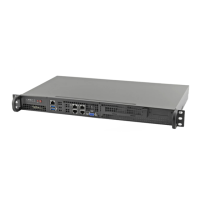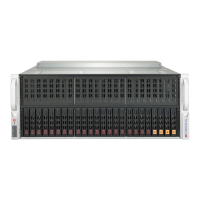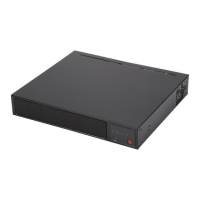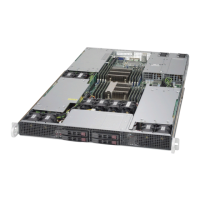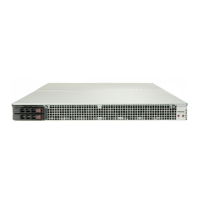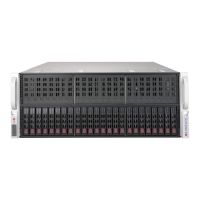Chapter 4: UEFI BIOS
119
Delete (a RAID Volume)
To delete a RAID volume you have created, take the steps below:
1. Select Advanced -> Intel(R) VROC SATA Controller.
2. Select the RAID volume to be deleted and then select Delete.
3. When asked to conrm deletion of the RAID volume, select Yes to delete the RAID
volume.
Note: When deleting a RAID volume, all data on the disks will be deleted as well.
Rebuild (a RAID Volume)
To rebuild a degraded RAID volume, take the steps below after replacing a failed hard
drive:
1. Select Advanced -> Intel(R) VROC SATA Controller.
2. Select the RAID volume to be rebuilt and then select Rebuild.
3. Select a disk from the list. Then you will return to the previous screen displaying the
volume in rebuilding mode.
Non-RAID Physical Disks
After selecting Advanced -> Intel(R) VROC SATA Controller, the Non-RAID Physical Disks
section lists the disks which have not been added to a RAID volume. Select a non-RAID
physical disk and you can take the following actions.
Mark as Spare
A spare disk is used for automatic RAID volume rebuilds when the status of “failed”,
“missing”, or “at risk” is detected on the array disk. For a RAID0 volume, only the status
of “at risk” will trigger automatic RAID volume rebuilds. Marking a disk as a spare one
will remove all data on the disk.
Mark as Journaling Drive
A journaling drive is used as an error event log to record an event when an error occurs
to a RAID5 volume. Marking a disk as a journaling drive will remove all data on the disk.
Locate LED
The feature is not applicable to this motherboard. Please ignore this feature.

